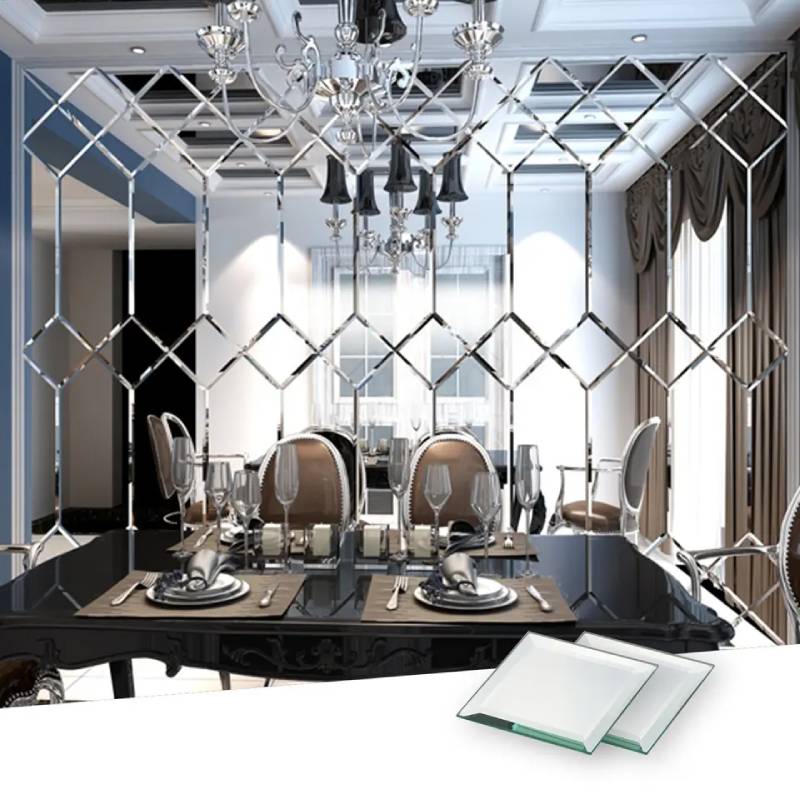The Flat Glass Production Process
Flat glass is one of the most widely used materials in construction, automotive, and various industrial applications. The production process of flat glass involves intricate methods that ensure the final product is clear, durable, and tailored to specific needs. This article outlines the primary stages of flat glass production, from raw material preparation to the finishing processes.
Raw Materials
The primary raw materials used in flat glass production include silica sand, soda ash, and limestone. Silica sand provides the essential silicon dioxide needed for glass formation; soda ash acts as a flux to lower the melting temperature, making the process more energy-efficient; and limestone contributes calcium oxide, which adds strength to the glass. Additional materials may include coloring agents and decolorizing agents, which can be added to achieve specific aesthetic or functional properties.
Melting
The first critical step in the flat glass production process is the melting of raw materials. The materials are blended in precise proportions and then fed into a furnace, where they are heated to temperatures between 1,500°C and 1,600°C. This high-temperature environment causes the raw materials to melt and form a molten glass pool. Modern glass production facilities typically utilize regenerative or oxy-fuel furnaces to improve efficiency and reduce emissions.
Forming
Once the glass has melted, it is poured onto a flat surface or through a forming system
. The two most common methods of forming flat glass are the float glass process and the sheet glass process.
1. Float Glass Process This is the predominant method used today, known for producing high-quality, smooth glass. In this method, the molten glass is floated on top of molten tin in a large bath. The glass spreads out and forms a uniform thickness as it cools, resulting in a flat, reflective surface without the need for further polishing.
2. Sheet Glass Process Although less common now, this older method involves pouring molten glass onto a flat surface and then rolling it out to achieve the desired thickness. The glass is then cooled and cut into sheets. This method typically results in a less uniform thickness and surface quality compared to the float glass process.
flat glass production process
Annealing
Post-forming, the glass sheets undergo annealing, a crucial process that involves slowly cooling the glass to relieve internal stress. The glass moves through an annealing lehr, where it is gradually cooled down to room temperature. This step enhances the durability of the glass and reduces the risk of cracking or shattering during handling and transportation.
Surface Treatment
After annealing, the flat glass may undergo various surface treatments to enhance its properties. These treatments can include coating with low-emissivity (low-E) films, applying tinting, or using chemical treatments to improve scratch resistance. Surface treatments not only improve the aesthetic appearance of the glass but also contribute to energy efficiency in buildings by improving thermal insulation and controlling solar gain.
Cutting and Inspection
Once the treatment processes are completed, the glass sheets are cut to specific sizes and shapes as per customer requirements. Rigorous inspection protocols ensure that the glass meets quality standards and specifications. This inspection may include checking for surface defects, transparency, and uniform thickness.
Packaging and Distribution
Finally, the processed glass is carefully packaged to prevent damage during transit. Each sheet is often wrapped in protective materials and stacked appropriately before being distributed to various industries, including construction and automotive.
Conclusion
The flat glass production process is a sophisticated combination of science and technology, ensuring that the end product meets the high standards required in modern applications. With ongoing advancements in materials and methods, flat glass production continues to evolve, paving the way for more efficient, environmentally friendly, and innovative glass solutions. As a fundamental component in our built environment, the importance of flat glass cannot be overstated, influencing everything from architectural designs to energy efficiency in our homes and businesses.
 Afrikaans
Afrikaans  Albanian
Albanian  Amharic
Amharic  Arabic
Arabic  Armenian
Armenian  Azerbaijani
Azerbaijani  Basque
Basque  Belarusian
Belarusian  Bengali
Bengali  Bosnian
Bosnian  Bulgarian
Bulgarian  Catalan
Catalan  Cebuano
Cebuano  Corsican
Corsican  Croatian
Croatian  Czech
Czech  Danish
Danish  Dutch
Dutch  English
English  Esperanto
Esperanto  Estonian
Estonian  Finnish
Finnish  French
French  Frisian
Frisian  Galician
Galician  Georgian
Georgian  German
German  Greek
Greek  Gujarati
Gujarati  Haitian Creole
Haitian Creole  hausa
hausa  hawaiian
hawaiian  Hebrew
Hebrew  Hindi
Hindi  Miao
Miao  Hungarian
Hungarian  Icelandic
Icelandic  igbo
igbo  Indonesian
Indonesian  irish
irish  Italian
Italian  Japanese
Japanese  Javanese
Javanese  Kannada
Kannada  kazakh
kazakh  Khmer
Khmer  Rwandese
Rwandese  Korean
Korean  Kurdish
Kurdish  Kyrgyz
Kyrgyz  Lao
Lao  Latin
Latin  Latvian
Latvian  Lithuanian
Lithuanian  Luxembourgish
Luxembourgish  Macedonian
Macedonian  Malgashi
Malgashi  Malay
Malay  Malayalam
Malayalam  Maltese
Maltese  Maori
Maori  Marathi
Marathi  Mongolian
Mongolian  Myanmar
Myanmar  Nepali
Nepali  Norwegian
Norwegian  Norwegian
Norwegian  Occitan
Occitan  Pashto
Pashto  Persian
Persian  Polish
Polish  Portuguese
Portuguese  Punjabi
Punjabi  Romanian
Romanian  Russian
Russian  Samoan
Samoan  Scottish Gaelic
Scottish Gaelic  Serbian
Serbian  Sesotho
Sesotho  Shona
Shona  Sindhi
Sindhi  Sinhala
Sinhala  Slovak
Slovak  Slovenian
Slovenian  Somali
Somali  Spanish
Spanish  Sundanese
Sundanese  Swahili
Swahili  Swedish
Swedish  Tagalog
Tagalog  Tajik
Tajik  Tamil
Tamil  Tatar
Tatar  Telugu
Telugu  Thai
Thai  Turkish
Turkish  Turkmen
Turkmen  Ukrainian
Ukrainian  Urdu
Urdu  Uighur
Uighur  Uzbek
Uzbek  Vietnamese
Vietnamese  Welsh
Welsh  Bantu
Bantu  Yiddish
Yiddish  Yoruba
Yoruba  Zulu
Zulu 

